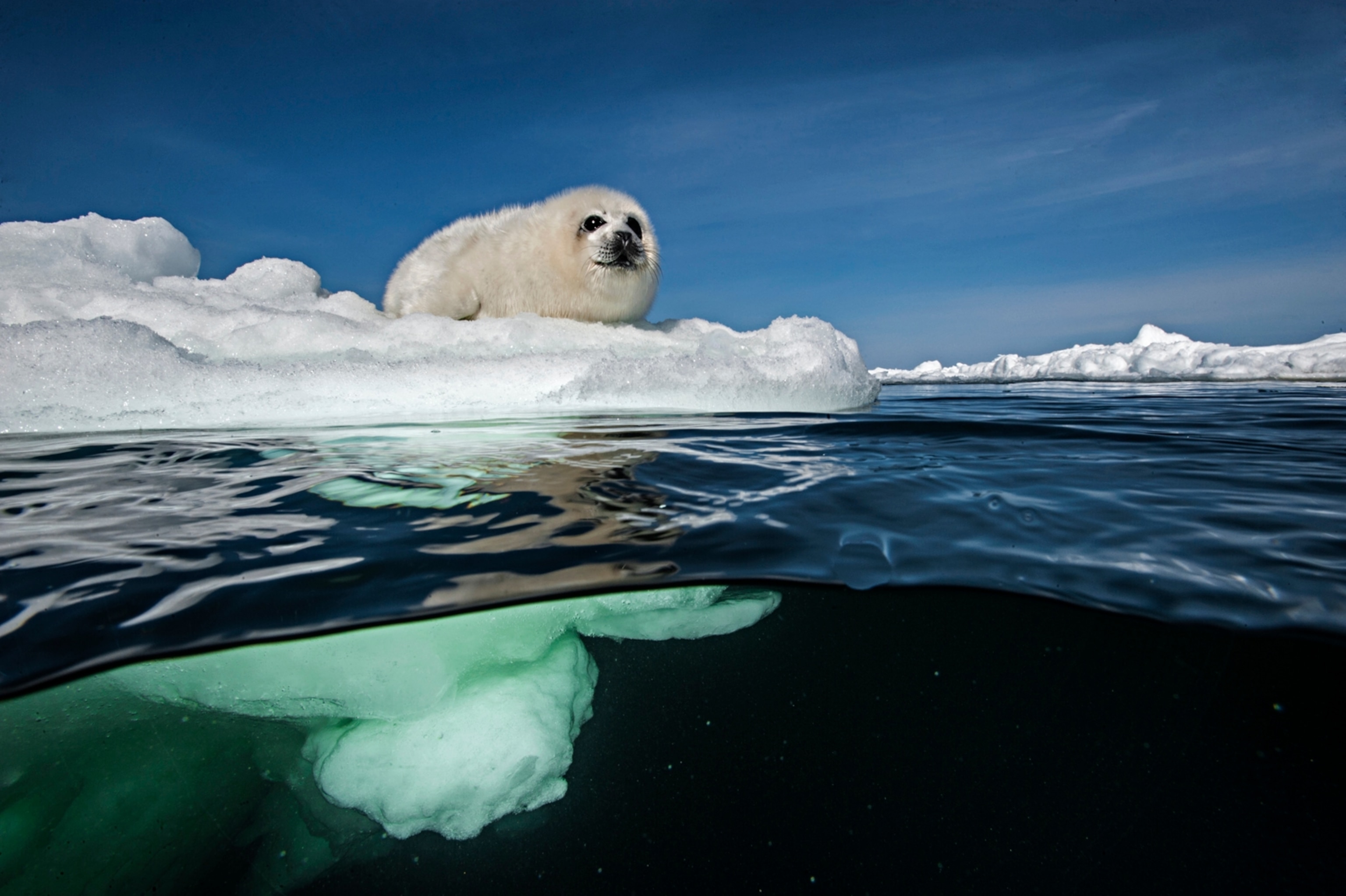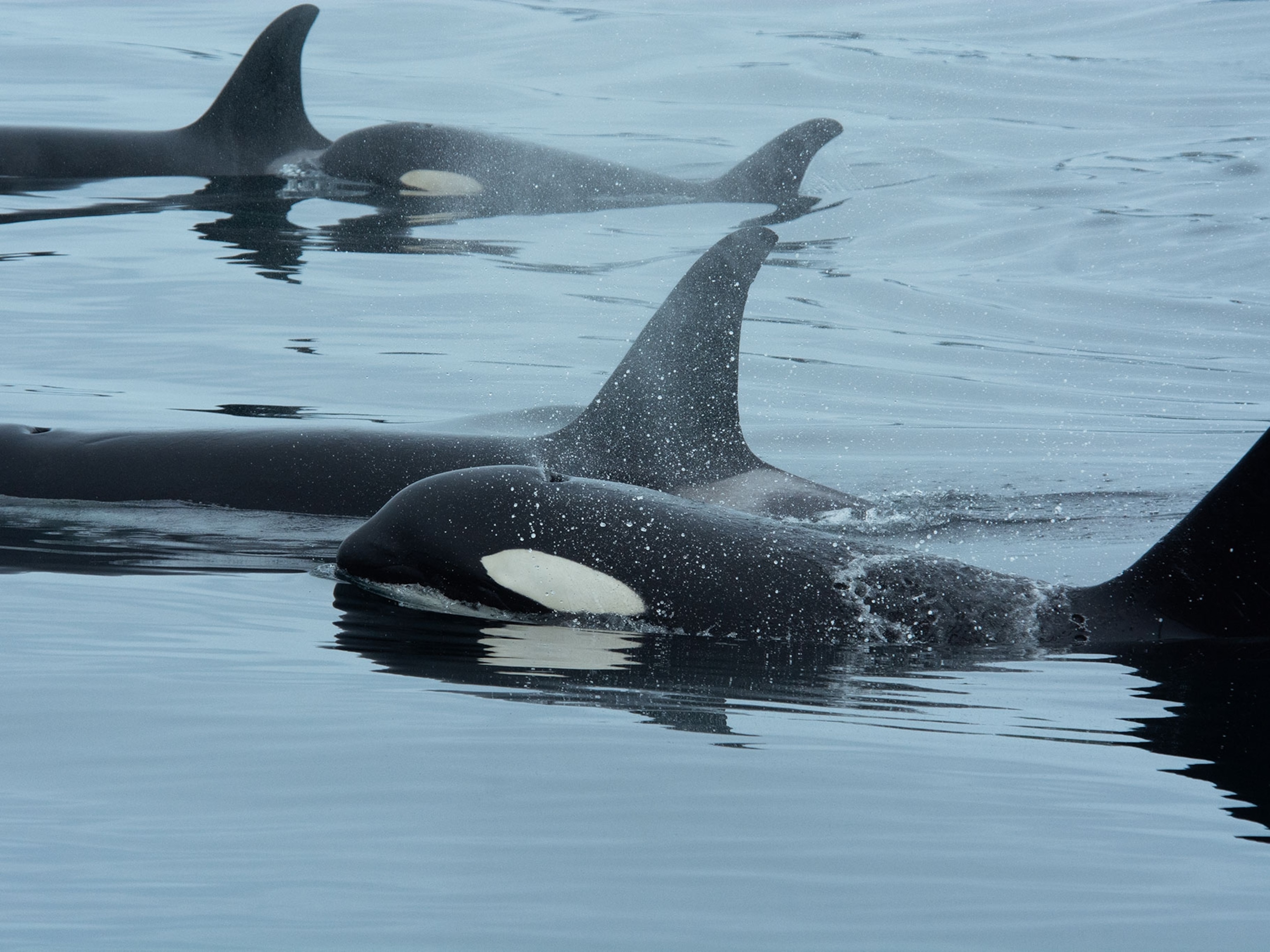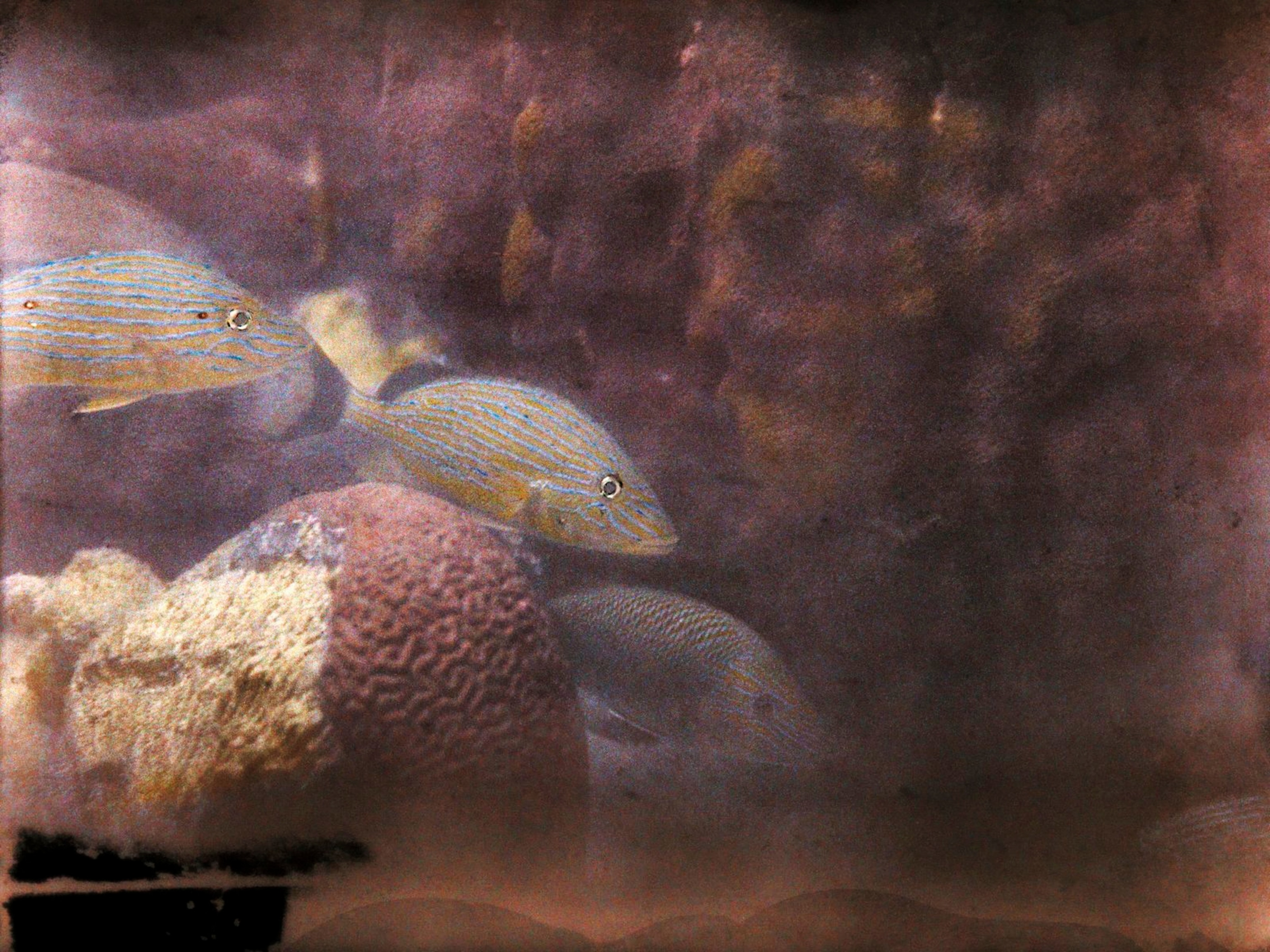
Jennifer Hayes: A Seal Encounter Brings a Change of Heart
Jennifer Hayes and her partner David Doubilet spent two years photographing the ecosystem of Canada’s Gulf of St. Lawrence for the story “The Generous Gulf“, appearing in the May 2014 issue of National Geographic magazine. For about ten days, they worked with harp seals in and under the ice near Magdalen Island.
The harp seal females give birth to their pups, called white coats, on the ice in the Gulf of St. Lawrence in February. The female will nurse the pup for 12 to 15 days. Then, she will abandon the pup so it learns how to eat, swim, and become a harp seal all on its own. It’s a tough beginning in a tough environment.

It was our last day of the expedition. David and I jumped into the ice-filled water and went in different directions. I found a baby harp seal on the edge of the ice floe looking for its mother. The mother swept past me in a fury of fur and coaxed the white pup into the water a few feet in front of me. They met underwater with a nose-to-nose “kiss” of recognition, a behavior that allows them to identify themselves. Are you my mother? Are you my pup?
I kicked along with the mother and pup as they swam for the safety of another ice floe. The curious pup would try to swim toward me and the mother used her flipper to physically hold it back. As we moved through the ice, the pup and I became closer and closer. We stopped and the pup climbed onto me to rest. I floated on my back as the pup sprawled heavily on my chest, and its face nuzzled my mask.

Moments later the pup rolled off. I was shooting like a crazy person when something nipped my left ankle and then my right. I looked down and saw several male harp seals circling beneath us. A male had “tested me” by biting my ankle to see what I was and why was I with a female they wanted to mate with.
I was thinking everything was under control when another big male scrabbled up and over my back pushing me underwater and taking my mask off as he slid over my head. I grabbed my mask as it sank in front of me, clumsily cramming it back onto my face and trying not to drop the camera.
There was an eruption and blur as the female harp seal dove down and battled the male as the pup and I huddled together watching from above.
She surfaced and swam toward us grunting and snorting seal sounds. I was shocked when she began to push the pup and me through the water using her body, head and flippers to guide and propel us. I could not synthesize what was happening. I am a skeptic at heart, wary of stories about how an animal appeared and pushed, pulled, or guided a person to safety. Skeptic or not it was happening. The female harp seal was physically moving the pup and me away from the aggressive males circling below us.

The female harp seal headed toward a 4-foot open water lead through the ice. The lead was too narrow and the ice can crush a person like a pumpkin when the two pieces drift together. I ducked under the female and watched the mother and pup swim away through the opening.
I was sad to see them disappear but I was exhilarated, excited and pumped-up on adrenaline as I kicked to the edge of the ice where I put my camera up onto the ice shelf. I was reaching down to unbuckle my weight belt when a male harp seal swam like a rocket from under the ice shelf and bit me square in the groin. He bit hard and shook. In a blink he let go and turned his head and bit my thigh. In another blink he let go, leaving a good gash in my thigh. Before I knew it I was standing upright on the ice in my weight belt wondering what happened.
I have a memorable scar but it’s not the bite that I will remember. I will remember the mother harp seal battling the male beneath us and then rising to guide her small pup and I away from aggression. I can’t explain why it happened. I can only embrace what happened and share it.
See more photographs from Jennifer Hayes and David Doubilet in the May 2014 issue of National Geographic magazine.





